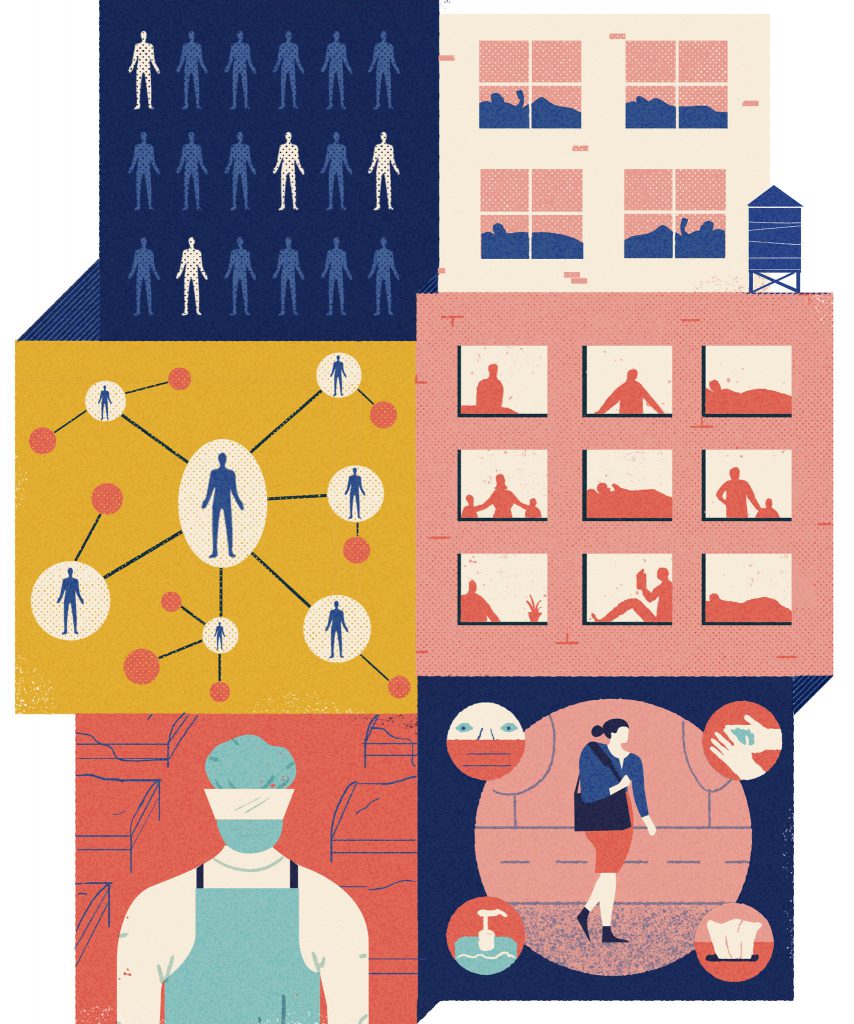The United States Needs a ‘Smart Quarantine’ to Stop the Virus Spread Within Families

Evidence from around the world shows that stay-at-home orders take us only so far.

The response of the United States to the coronavirus pandemic has been haphazard, a patchwork of rules applied inconsistently. Some states lack stay-at-home mandates, and many that have mandates got started less than a week ago. We’re suffering under a jumble of half measures that are likely to drag on for months and that fail to solve the problem.
It doesn’t have to be this way. Evidence from around the world shows that stay-at-home orders are likely to take us only so far. There is a proven public health approach to pandemics that has worked in the past against Ebola and other diseases, and has already worked well against Covid-19 in countries like China, South Korea and Singapore. (See, for example, the analysis of nearly 26,000 Covid-19 cases in Wuhan, China, conducted by the biostatistician Xihong Lin and colleagues.)
Four key measures, on top of treating the ill and maintaining physical distancing, must be in place not just to slow the rise of Covid-19 cases, but also to bend the curve downward. These are: test widely, isolate the infected, trace the contacts of those infected and quarantine appropriately.
Of all these measures, the one that will require the greatest adaptation on the part of the American public is isolation and quarantine. Where this has been most successful it has required separate designated facilities to accommodate and monitor those isolated with mild illness and those subject to quarantine. We call this approach “smart isolation and quarantine” or “smart quarantine.”
The United States needs to adopt smart quarantine as soon as possible. It will require us to endure new and difficult challenges. But the long-term benefits — fewer infections and deaths, a quicker return to work and “normalcy” — will far outweigh the short-term hardships.
There are three main challenges to building a smart quarantine system in the United States. First, we must vastly increase our capacity for testing and tracing contacts.
Second, we must create — and at times mandate — humane quarantine processes. With considerable success, China, South Korea and Singapore have tested far more of their populations and concurrently mandated tiered isolation and quarantine.
Third, American families will be asked to endure separations that are more difficult than what many have currently experienced. Family units are the hotbed of viral spread, and doing the right thing for your family simultaneously does the right thing for the community.
If we inspire, inform and mobilize the public, we can accomplish the needed separations mainly voluntarily and always in a way that respects civil liberties to the highest degree possible while protecting the public’s health (and the nation’s economy).
In a smart quarantine, anyone in a family who is not well — and if you’re sheltering in place, whomever you are with is considered “family” — must get tested and be separated from the family until results return. While awaiting results, the separated family member can move into temporary accommodations overseen by medical professionals and be tested.
Those that test negative remain in quarantine in their accommodations, and if they test negative again at 14 days, they can return home, where they must continue to shelter in place. Those that test positive leave their temporary accommodations and enter a more formal Covid-19 recovery facility. Most of these people will recover and will be sent home in about two weeks after testing negative at least twice. People who get worse will be sent to an acute care facility.
In a tiered system like this, only those that need critical care would be sent to regular hospitals and intensive care units. This would allow us to avoid many of the serious shortages — I.C.U. beds, ventilators, personal protective equipment, health care workers — that we’ve seen in places like Italy and New York City.
Currently, most people in the United States with Covid-19 are not offered care until their condition is critical, which is often too late. A smart quarantine, by contrast, allows people to receive medical care in a professional facility as soon as they feel ill. Because severe cases are identified and treated earlier, fewer people die.
Beating the coronavirus will take great effort and require deep sacrifice and rapid mobilization — and doing so properly requires a smart quarantine. Any other approach exacts a price none of us wants to pay.
-
Latest News
-
Top Posts in April



















Comments